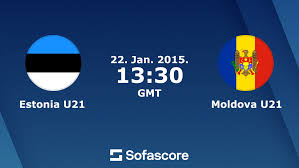Comparative Analysis: Estonia vs Moldova

Introduction
The comparison between Estonia and Moldova is a fascinating topic that highlights the diverse paths of two European nations. Estonia, a member of the European Union, has made significant economic and technological advancements since its independence from the Soviet Union in 1991. In contrast, Moldova, also a former Soviet state, remains a developing country facing various challenges. Understanding the differences and similarities between these two nations is crucial for policymakers, investors, and citizens alike.
Background Information
Estonia, located in Northern Europe, has a population of approximately 1.3 million and is known for its digital society and e-governance innovations. Its GDP has grown steadily, achieving significant resilience and stability in recent years. Meanwhile, Moldova, situated in Eastern Europe, has a population of around 2.6 million and has struggled with political instability and economic challenges. Despite its difficulties, Moldova has potential, with rich agricultural lands and a growing diaspora.
Economic Comparison
Estonia’s economy is characterized by a strong focus on technology and services, significantly contributing to its GDP. The country has seen growth in industries such as information technology, telecommunications, and biotechnology. As of 2023, Estonia’s GDP per capita is around $30,000, positioning it among the highest in the region.
In contrast, Moldova’s economy relies heavily on agriculture, with around 40% of its workforce employed in this sector. The GDP per capita is considerably lower at approximately $6,900. Moldova faces several challenges, including inadequate infrastructure and a high level of corruption, which impede economic growth.
Cultural Aspects
Estonia and Moldova also differ culturally. Estonia has a diverse population with a rich history that includes influences from Finland, Sweden, and Denmark, further shaped by Russian and Soviet occupations. The country celebrates a unique culture with festivals, folk music, and distinctive cuisine.
Moldova has a predominantly Romanian cultural influence and is known for its traditional music, dance, and wine production. Despite cultural and linguistic similarities with Romania, Moldova’s identity is shaped by its unique historical experiences, including its time under Soviet rule.
Conclusion
In conclusion, the comparison between Estonia and Moldova illustrates the different trajectories of these two nations. While Estonia has successfully integrated into European economic structures, Moldova continues to strive for stability and growth. For global investors and policymakers, recognizing these differences is essential in understanding regional dynamics and making informed decisions. As both countries navigate their futures, their unique qualities will continue to shape their paths in the complex landscape of European relations.









